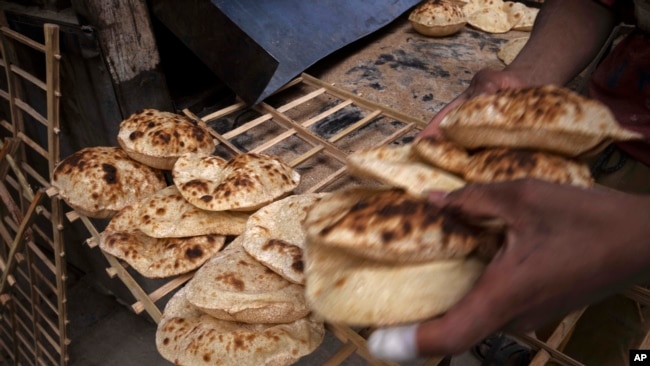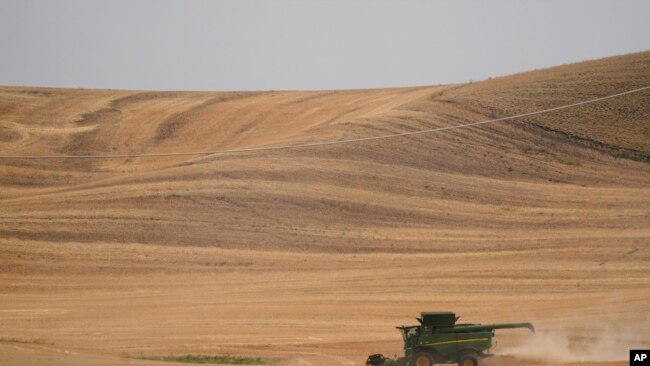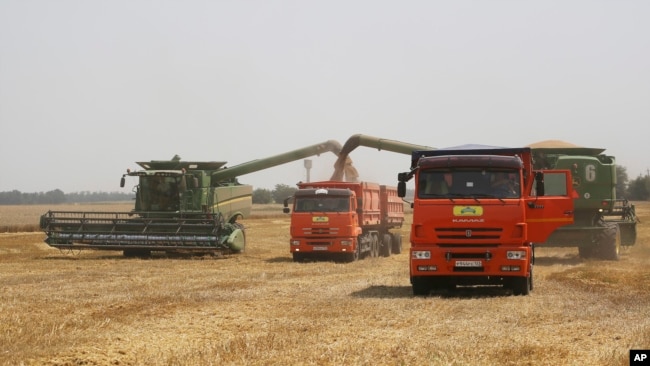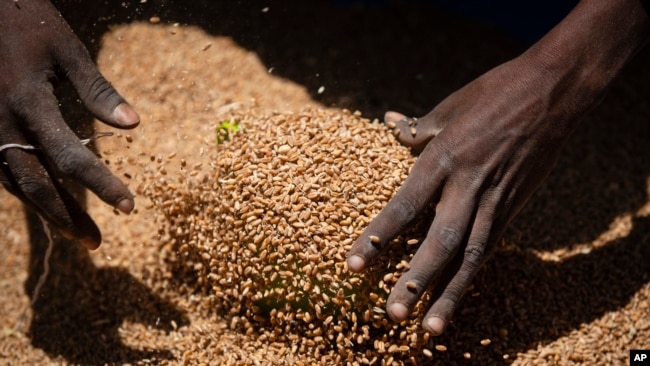日本には、お米があるじゃないか!!
今やグルテンフリー 流行りですよね!
米粉パンは、もっちりし、パスタに麺、パンケーキも美味しくて大好きです。
大豆パスタもありますし・・・
コロナで露呈したデジタ弱国、こんな時には自給率の低さも炙り出されます。もはや先進国ではない日本、日本をどんな国にする計画ですか?
話は脱線してしまいましたが、お米で世界を救えないものでしょうか?
VOAで英語を学び、世界の今を考えましょう!!
国際機関、戦争による小麦の供給への影響を懸念(和訳)
International Agencies Concerned About War’s Effect on Wheat Supply
March 24, 2022
ロシアのウクライナ戦争で、エコノミストは世界の小麦の供給について懸念しています。
ウクライナとロシアは世界の小麦と大麦の輸出の30%以上を占めています。今回の戦争で、それらの穀物の供給が制限されることになります。
それは、中東、アフリカ、アジアの人々に問題を引き起こす可能性が高いのです。これらの地域の貧しい人々は、日々の食料の多くを政府が購入する小麦に頼っています。パンや麺類という形でです。
もし、ロシアやウクライナから小麦を調達できないのであれば、その小麦はどこから来るのだろうと、オブザーバーは考えています。
世界各地の農家は、小麦の作付けを増やそうと考えています。
エド・ケッセルさんはアメリカ北部のノースダコタ州で農場を営んでいます。彼はノースダコタ穀物生産者協会のリーダーでもあります。今年はさらに小麦を植えて、収入を増やすかもしれないと言っています。
WFPの責任者は、小麦のコスト上昇と小麦の輸出量減少が重なった場合、”ウクライナだけでなく、世界的に大惨事になる可能性がある”と述べています。
ロシアに課された金融規制が、同国が他国に穀物を販売する能力をどのように制限するかは、まだ明らかではありません。
今のところ、オーストラリアとインドが輸出を増やすと言っています。しかし、他の多くの国は、世界に送ることができる小麦の量をすぐに変更することはできません。
近年、アメリカの農場では約5,000万トンの小麦を生産しています。しかし、昨年は雨が少なく、他の作物を植える動きがあったため、その量は10%ほど減少しました。
カナダ、オーストラリア、アルゼンチンは、いずれも小麦の作付けを増やすことができると発表しています。しかし、どの程度のスピードで変更できるかは不明です。
ダグ・マーティンさんは、カナダのマニトバ州で農業を営んでいます。彼は、ほとんどの農家がすでに今シーズンの計画を立てており、"おそらくそれに従うだろう "と述べています。その理由のひとつは、オーツや大麦など他の作物がより良い価格をもたらしているからだとマーティンは言います。
同時に、農家は作付け量に気を配っています。肥料など、農業に重要な他の物資がより高価になっているからです。
シルヴァン・シャルルボア氏は、カナダのダルハウジー大学食料政策学の教授です。彼は、次のように述べています。もし、肥料がもっと安価であれば、もっと多くの小麦を栽培することができるかもしれないと述べています。しかし、そうはいかないのです。
フィリップ・ドゥテルテさんは小麦農家です。彼の農場はパリの南西約200キロのところにあります。もう少し小麦を増やすことができるかもしれないが、わからないと言います。彼は、フランスが "明日のフランスとヨーロッパの食料安全保障を保証することはできない "と指摘しています。
オーストラリアでは、小麦の生産が好調です。しかし、国外で販売する小麦は、すでにすべて他の買い手に約束されています。
アルゼンチンでは、政府が輸出の価格統制を行ったため、農家は小麦を国外に売ることが難しくなりました。
エジプトなど生育環境の悪い国では、小麦は食生活の大部分を占めています。エジプトは世界最大の小麦輸入国です。価格上昇に対応するため、政府は最近、価格規制を発表し、パンを高く売ろうとする者には罰金を科すと言っています。
ウクライナやロシアからの小麦が少なくなっても補えるように、約2億7千万トンの小麦が保管されています。しかし、その半分はすでに14億人の人口を支えるために中国に保有されています。
ウクライナでの戦闘が終わるまで、この問題は残るかもしれません。
トム・バーンハルトさんはノースダコタ州の農家である。小麦の価格が上がっても、おそらく作付けは増やさないだろうと言います。
彼は、"価格を追いかける "ために作付けを増やしたことは一度もないと話していました。
International Agencies Concerned About War’s Effect on Wheat Supply
Russia’s war in Ukraine has economists concerned about the worldwide supply of wheat.
Ukraine and Russia account for over 30 percent of world wheat and barley exports. The war will limit the supply of those grains.
That is likely to cause problems for people in the Middle East, Africa and Asia. Poor people in those regions depend on wheat purchased by their governments for much of their daily food. It comes in the form of bread and noodles.
Observers are wondering where that wheat will come from if it cannot come from Russia and Ukraine.
Farmers in other parts of the world are considering planting more wheat in their fields.
Ed Kessel owns a farm in the northern U.S. state of North Dakota. He is a leader of the North Dakota Grain Growers Association. He said he may plant some more wheat this year to possibly earn additional money.
The price of wheat is expected to go up, along with other grains produced in Russia and Ukraine. Another commodity going up in price because of the war is oil.
Kessel said a little more money from wheat will help offset the rising cost of fuel and the loss of some crops due to recent dry weather.
“We’ll put a few more acres into wheat and a few more into sunflowers,” he said.
Economists are watching farmers in the U.S. and in other nations including Canada, France, Australia and Argentina. They are wondering if farmers in those places can make up for lost Ukrainian and Russian supplies.
As long as that question remains unanswered, nations like Egypt, Lebanon and Pakistan will worry about the wheat supply.
In a report released this month, the International Grains Council said extra grain from other parts of the world will only “partially” make up for lower production in Russia and Ukraine.
Another organization expressing concern about the wheat supply is the United Nations’ World Food Programme (WFP). About half the grain purchased each year by the WFP comes from Ukraine.
The head of the WFP said the combination of more costly wheat and lower wheat exports is a “catastrophe not just in Ukraine,” but possibly worldwide.
It is not yet clear how financial restrictions placed on Russia will limit the country’s ability to sell grain to other countries.
For now, Australia and India have said they will increase their exports. But many other countries are not able to quickly make changes to the amount of wheat they can send to the rest of the world.
In recent years, farms in the U.S. produced about 50 million metric tons of wheat. But last year, the amount was about 10 percent lower because of a lack of rain and moves to plant other crops.
Canada, Australia and Argentina have said they can all start to plant more wheat. But it is unclear how fast they can make changes.
Doug Martin is a farmer in Manitoba, Canada. He said most farmers already have a plan in place for the season and “will probably stick to that.” One reason for that, Martin said, is that other crops such as oats and barley are also bringing in better prices.
At the same time, farmers are being careful with how much they plant. That is because other supplies important for farming, such as fertilizer, are more costly.
Sylvain Charlebois is a food policy professor at Dalhousie University in Canada. He said if fertilizer were less costly it might be possible to grow more wheat. But that is not the case.
Words in This Story
region –n. part of a country or the world
noodle –n. a thin strip of dough made from flour, water and eggs cooked in boiling liquid
commodity – n. something bought and sold
offset – v. to cancel or reduce the effect of something
sunflower –n. a tall plant that has very large yellow flowers that produces seeds that can be eaten
partially –adv. somewhat but not completely
catastrophe –n. a terrible disaster
barley –n. a kind of grain used for food that also is used for beer and whiskey
fertilizer –n. a substance applied to plants that helps them grow
diet –n. the food that people usually eat
Phillippe Duterte is a wheat farmer. His farm is about 200 kilometers southwest of Paris. He said he might be able to add a little more wheat but he is not sure. He noted that France “cannot guarantee the food security of France and Europe tomorrow.”
In Australia, wheat production has been strong. However, all the wheat for sale outside of the country has already been promised to other buyers.
In Argentina, farmers have trouble selling their wheat outside of the country because the government put in place price controls on exports.
Wheat is a large part of the diet in places suffering from bad growing conditions such as Egypt. Egypt is the largest wheat importer in the world. In answer to price increases, the government recently announced a price restriction and said that those who are trying to sell bread for a high price will be fined.
There are about 270 million metric tons of wheat in storage that can help make up for less wheat coming from Ukraine and Russia. However, half of that is already held in China to support its 1.4 billion people.
The problem may remain until the fighting in Ukraine stops.
Tom Bernhardt is a farmer in North Dakota. Even with the higher wheat prices, he said he probably will not plant more of the crop.
He said he has never planted more of a crop just to “chase prices.”



